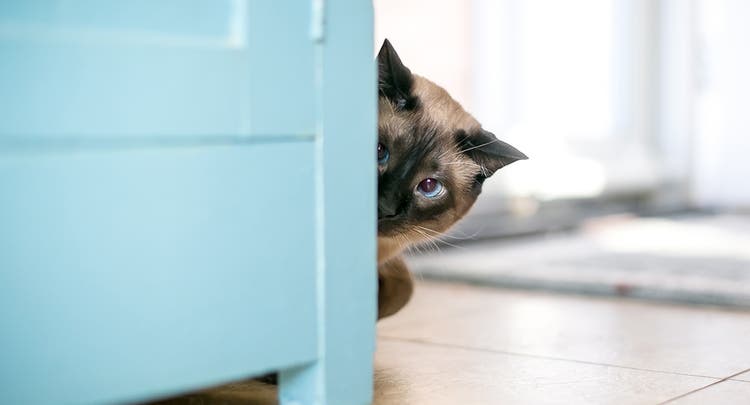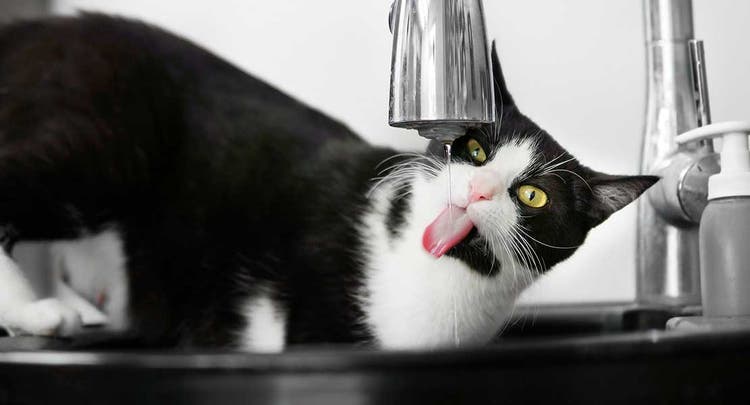Signs your cat may have a UTI.
If you've noticed your cat's litter box habits have changed - fewer urine spots, spots of a different color, or lots of small spots, for instance - they may have a urinary tract infection (UTI). This can be a painful experience for your cat and stressful for you. Knowing the signs and symptoms, as well as how to help prevent UTIs, can make life more pleasant for all members of your household.
What Are Cat UTI Symptoms?
UTIs happen when bacteria travels through the urethra into the bladder, where it grows and reproduces to cause an infection. Certain behaviors and signs may indicate your cat has a UTI:
- Straining to urinate. One of the first symptoms you'll likely notice is your cat struggling to release urine in the litter box. Not only is it painful, but it can also be dangerous because they're not ridding themselves of toxins.
- Frequent trips to the litter box. Since they're not releasing much urine at once, you'll see your cat repeatedly making trips to their litter box.
- Painful urination and licking of genitals. The pain and struggle to urinate is sometimes so severe that your cat will lick their genital area to soothe the irritation. Unfortunately, this worsens the problem as the area becomes raw and urination becomes even more painful. When the problem gets to this point, your cat may cry out in pain.
- Bloody, discolored or unusual smelling urine. Discolored or blood-tinged urine is an extremely common symptom of UTIs, especially in female cats. Urine with an abnormal smell can also be a sign, though you may not be able to tell depending on the type of litter in your cat's box.
- Relieving themselves outside the litter box. While urinating in another area doesn't always indicate a UTI, take notice of it if your cat is showing other signs of infection.
Cat UTI vs. Feline Lower Urinary Tract Disease
Feline Lower Urinary Tract Disease (FLUTD) is another relatively common condition that can easily be confused with a UTI. While UTIs are caused by an infection, FLUTD describes a range of conditions or diseases affecting a cat's bladder and urethra without infection, such as urinary stones, a blocked urethra or diabetes, to name a few. FLUTD is often brought on by stress. FLUTD and UTIs have many of the same symptoms, so it's important to discuss any litter box concerns with your vet.
Factors That Put Cats at Higher Risk for UTIs
Older female cats are the most at risk for UTIs, though any cat can develop an infection. Cats prone to bladder stones or with diabetes mellitus (sugar diabetes) can also be more likely to get UTIs. Other potential risk factors include not having enough litter boxes or stress, such as from a recent move or a change in the household, like a new baby, cat or dog.
Tips for Cat UTI Prevention
It's important to speak to your vet about the best diet and prevention plan for your cat, as age and health all play a role. Your vet may recommend a specific food, such as wet food or a renal diet, and feeding schedule for UTI prevention. Feeding your cat a high-quality diet is one of the best ways to promote overall good health, including urinary tract health.
Additional steps that may not only aid in preventing UTIs, but will also keep your cat healthy in general include:
- Increase your cat's water consumption. Make sure their water bowl is clean and filled with fresh water at all times. You can also encourage your cat to drink more by setting up multiple water bowls around the house, ensuring all water bowls are wide and not too narrow, adding a small amount of chicken broth to the water or purchasing a cat drinking fountain.
- Place litter boxes in quiet areas of the house where your cat feels comfortable.
- Keep litter boxes clean. Be sure to scoop them twice a day and change the litter at least once a week.
How Long Does It Take for a UTI to Go Away in a Cat
If you suspect your cat has a UTI, schedule an appointment with your vet as soon as possible. They can help determine if your cat's symptoms are being caused by a UTI or FLUTD. Once UTI treatment begins, symptoms usually start improving after a few days. (FLUTD symptoms may take longer to subside.)
Cleaning litter boxes may not be the most glamorous part of cat ownership, but your knowledge of your cat's litter box routine is a helpful tool in catching urinary tract or bladder issues early.







